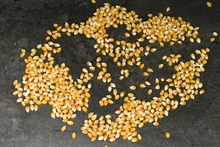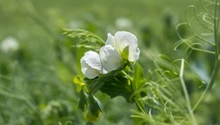
In a world where our planet's health is at stake, the theme for World Environment Day 2024, "Land Restoration, Desertification, and Drought Resilience," emerges as a beacon of hope amidst uncertainty. Picture a vast landscape scarred by erosion, where once-fertile soil turns to dust under the scorching sun, leaving communities struggling to survive as water sources dry up and crops wither away. It's in this backdrop that the slogan, "Our Land. Our Future," resonates deeply. This theme isn't just about acknowledging the challenges; it's about rallying together as a global community to protect our precious land and secure a sustainable future for generations to come.
By focusing on restoring our land, combating desertification, and building resilience to drought, we lay the foundation for a more sustainable and resilient future. It's a call for individuals, communities, and nations alike to come together in solidarity and stewardship of our shared home. Let's delve into some data to understand the gravity of the situation and explore potential avenues for action:
Global Landscape:
According to recent reports, approximately 24 billion tons of fertile soil are lost every year due to erosion, primarily caused by unsustainable agricultural practices, deforestation, and climate change. This loss of soil not only threatens food security but also increases desertification and drought, affecting millions of people worldwide.
Desertification, the process by which fertile land becomes desert, is advancing at an alarming rate. Over 2 billion hectares of land are already degraded, with an additional 12 million hectares lost annually. The consequences are dire, leading to reduced agricultural productivity, biodiversity loss, and displacement of communities reliant on these ecosystems for sustenance.
In the face of these challenges, building resilience becomes paramount. Resilience in agriculture means adopting sustainable practices that conserve soil, water, and biodiversity while ensuring food security and livelihoods for present and future generations. It involves empowering communities to withstand the impacts of drought and desertification through innovative solutions and collective action.
Indian Scenario:
According to data from the United Nations Convention to Combat Desertification (UNCCD), from 2015 to 2019, 30.51 million hectares of India's total reported land suffered degradation. This accounts for 9.45% of the country's landmass, a significant increase from the 4.42% reported in 2015. To put this into perspective, India's degraded land is equivalent to approximately 43 million football pitches.
The National Bureau of Soil Survey and Land Use Planning reveals that approximately 30% of India's soil, totaling 146.8 million hectares, is degraded. Within this figure, 29% of soil is lost to the sea, 61% is displaced from one location to another, and 10% ends up deposited in reservoirs.
Despite India's self-sufficiency in food production, there's a looming threat: if soil degradation continues unabated, the nation may face the need to import food in the future. This concern is compounded by the fact that India, occupying just 2.4% of the world's land area, shoulders the responsibility of feeding 18% of the global population.
“At BioPrime, with our cutting-edge ag-Biologicals research and development, we have created biological solutions that provide farmers with sustainable, natural, and safe products. These biologicals not only boost crop yields but also improve soil health, reduce dependency on chemical inputs, and enhance overall agricultural resilience. The patented SNIPR platform, a cutting-edge technology designed to extract environmentally safe biomolecules, is the foundation of our products. Our method is predicated on the idea of nature's interconnection and its symbiotic interaction with beneficial microbes,” said Dr. Renuka Diwan, Co-founder & CEO, of BioPrime Agrisolutions.
“After more than a decade of research, we have created a range of biologicals that are effective in boosting nutrient uptake, fighting infections, and strengthening plant resistance. The creation of these biological products offers a strong substitute and assures of maximum yields together with safe, residue-free produce. Our biological products, in contrast to conventional chemical and synthetic agri-input goods, have little effect on human health and the environment, lowering the possibility of hazardous residues in produce or the surrounding area,” she added.
Call to Action: World Environment Day 2024
So, what can we do to restore our land and secure our future?
-
Promoting Sustainable Agriculture: Embracing agroecological practices such as conservation agriculture, agroforestry, and precision farming can mitigate soil erosion, enhance soil fertility, and improve water efficiency.
-
Investing in Restoration: Governments, NGOs, and private sectors must prioritize investments in land restoration projects, including reforestation, afforestation, and soil rehabilitation initiatives.
-
Empowering Communities: Empowering local communities with knowledge, resources, and tools to manage their natural resources sustainably is essential. This includes supporting smallholder farmers with access to drought-resistant crops, water harvesting techniques, and alternative livelihood options.
-
Policy Reforms: Enacting policies that incentivize sustainable land management practices and penalize land degradation is crucial. Governments need to integrate land restoration and resilience-building measures into their national development agendas.
-
Raising Awareness: Education and awareness campaigns play a pivotal role in mobilizing public support and fostering a culture of environmental stewardship. By educating individuals about the importance of land restoration and drought resilience, we can inspire collective action at all levels of society.
On this World Environment Day, let us reaffirm our commitment to safeguarding our land and securing our future. By embracing the principles of land restoration, desertification control, and drought resilience, we can pave the way for a more sustainable and prosperous tomorrow. Our land is not just a resource; it is our heritage, our sustenance, and our legacy to future generations. Let us cherish it, nurture it, and ensure that it thrives for years to come.
Together, let's cultivate hope for a greener, healthier planet. After all, our land is indeed our future. Happy World Environment Day!













